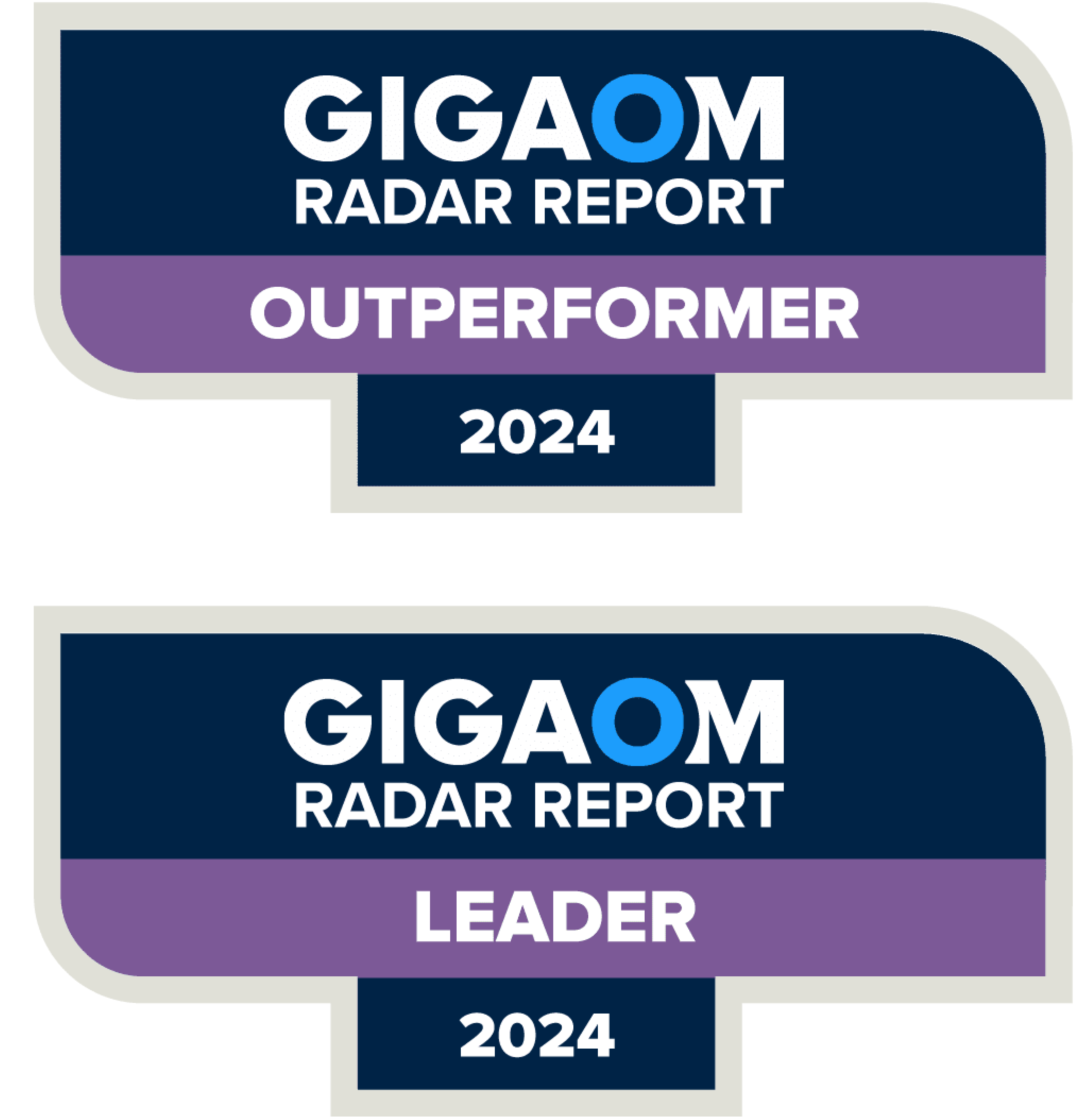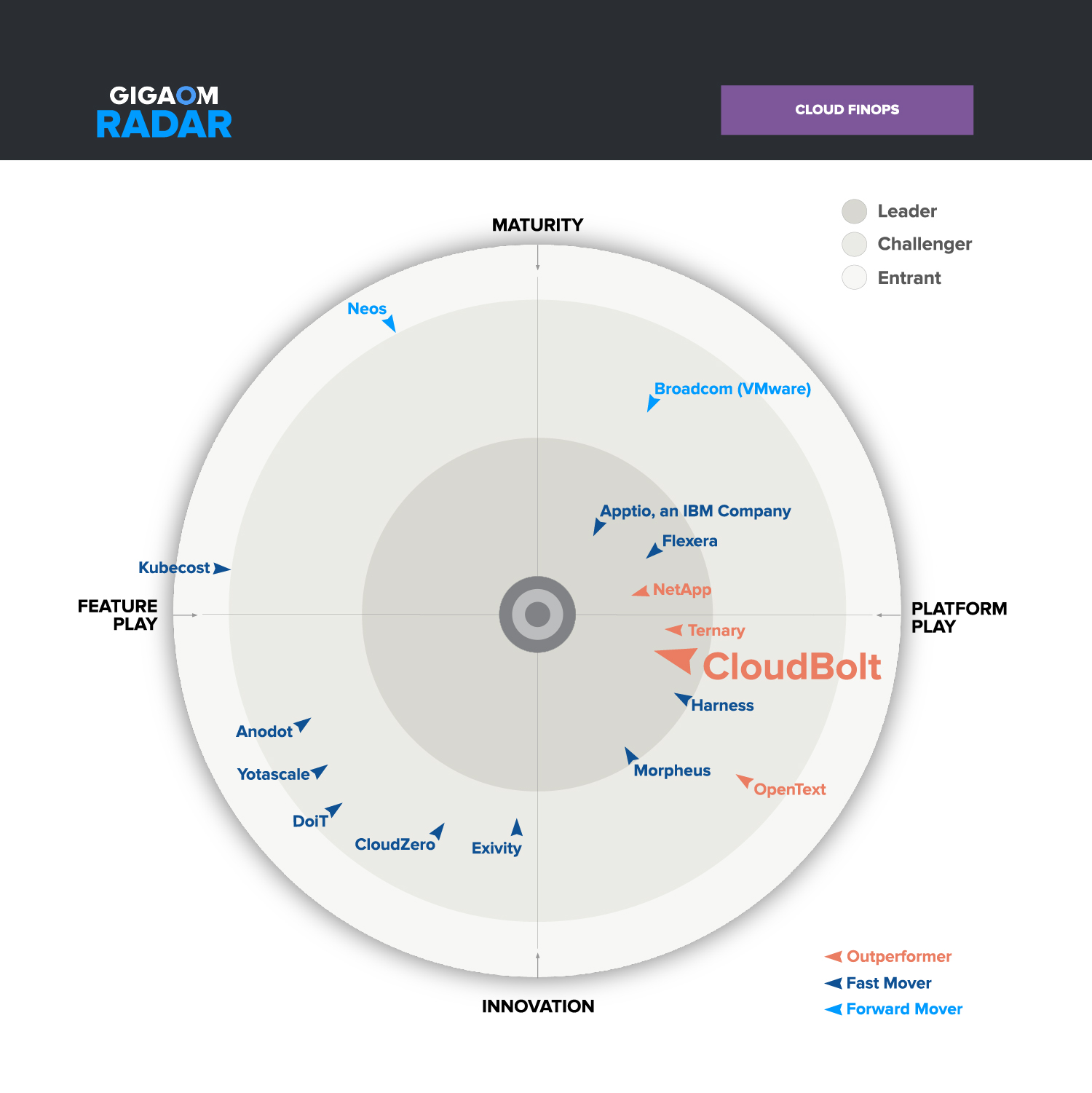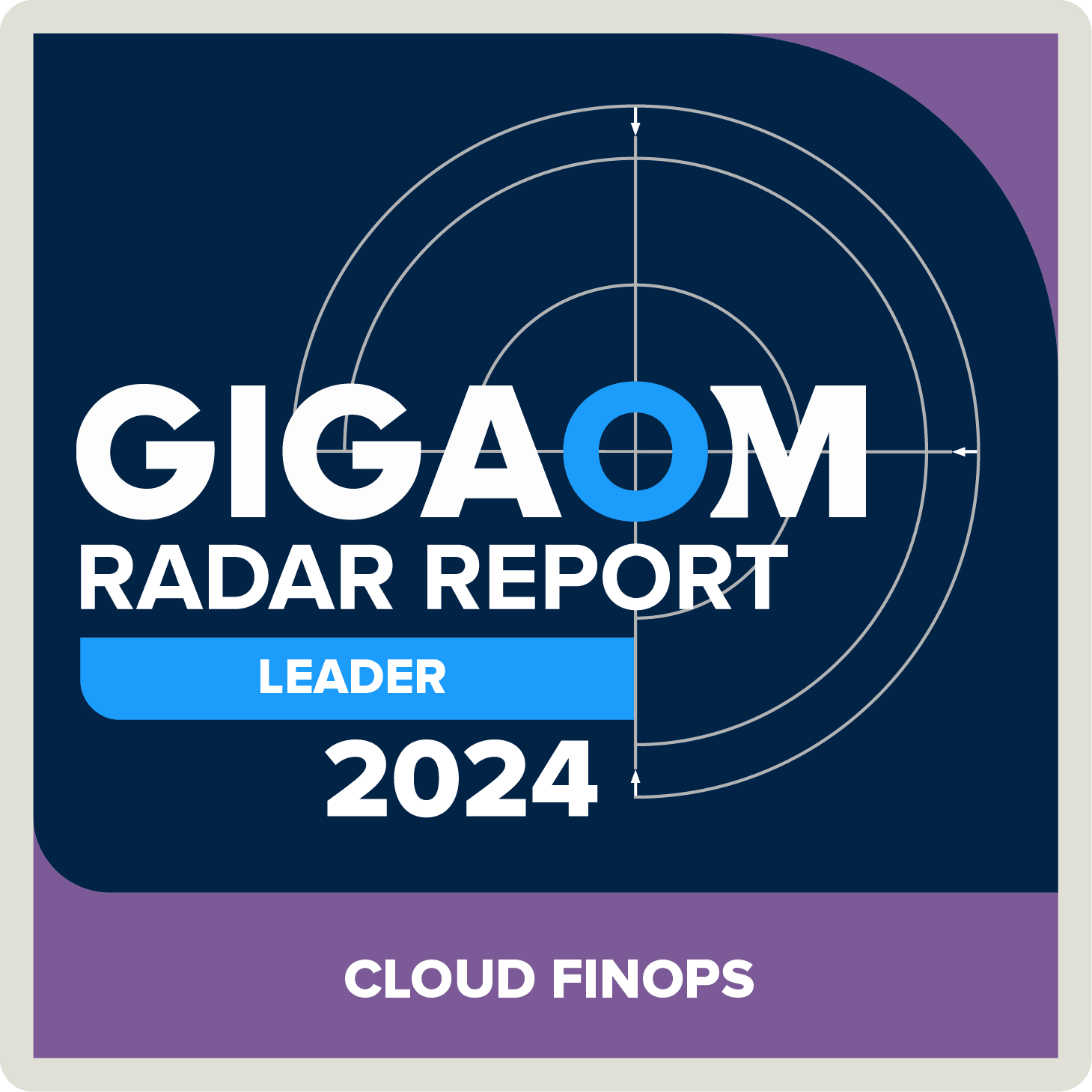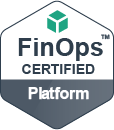Focus on FinOps: The alignment paradox
Real-world insights
We surveyed 900 professionals in three distinct groups: FinOps leaders and practitioners, DevOps/Engineering, and IT Executives to discern any perceptual differences between these cohorts.
Read this report to learn:
- How much progress have companies made in creating a culture of FinOps and alignment across teams.
- Are there any lingering gaps between FinOps teams and DevOps/Engineering teams?
- What nirvana should look like for a company with alignment across all teams.
- Recommendations for unlocking the full potential of FinOps.
Fill out the form and download the full report now to access comprehensive insights and strategic guidance on navigating the evolving landscape of FinOps.








































Are you struggling to control Kubernetes costs? Lacking visibility into container spend?
Watch this joint webinar where FinOps experts from CloudBolt and StormForge discuss how you can:
- Gain complete cost visibility across Kubernetes clusters
- Continuously optimize Kubernetes application resources and spend
- Accurately chargeback Kubernetes costs to teams
- Maximize ROI from your Kubernetes investments
CloudBolt named market leader in GigaOm Radar Report for FinOps
Read the Comparison Guide

How CloudBolt performed
At CloudBolt, we have the confidence to let our solution speak for itself.
Top rankings
- #2 in “Business Criteria” category
- #2 in “Emerging Features”‘
- #4 in “Key Features” category
- Top 3 overall, closest to center with Apptio and NetApp
- 1 of only 4 vendors named an “Outperformer”
Key strengths
- Advanced forecasting, trend, and variance analysis to manage cloud budgets
- Cloud rate optimization across public and private clouds during provisioning
- Seamless IT finance integration and chargeback with systems like SAP and Oracle
- Proprietary AI/ML algorithms for anomaly detection and cost insights

Why read the GigaOm Radar for Cloud FinOps?
Objective, unbiased analysis
While some vendors may cherry-pick data to paint their solutions in the best light, CloudBolt is committed to transparency. That’s why we’re proud to share the complete GigaOm Radar report, which provides an independent, forward-looking assessment of all the major players in the cloud FinOps space. Their analysts do not engage with vendors outside the research process to avoid unintentional bias.
Focused on critical capabilities
The report defines the most relevant functional and non-functional aspects that are widely adopted and well-implemented, such as:
- • Dynamic extraction of pricing data from multiple public clouds
- • Budget threshold management and alerts
- • Cost allocation and showback
- • Security, authorization, and audit controls
Get your free copy
Download now

“CloudBolt has a strong offering in both FinOps capabilities and cloud operations as a whole. The strength of these capabilities puts this solution in the Innovation/Platform Play quadrant as an Outperformer and Leader.”
– GigaOm Radar for Cloud FinOps

Evaluating Your Options Beyond VMware
Strategic Insights
In this whitepaper, you will discover:
- The key issues facing VMware customers, including price increases, forced product bundling, reduced innovation, and declining customer support
- Common migration strategies, including staying with VMware, switching to vSphere Foundation, replacing the VMware stack, and shifting to cloud-native solutions
- The benefits and risks associated with each migration strategy to determine the best path forward for your organization
- How CloudBolt’s solutions for hybrid cloud management, orchestration, and financial management can provide a seamless transition from VMware, enhancing efficiency, agility, and value
Don’t miss out on the opportunity to explore your options beyond VMware. Fill out the form and download the full whitepaper now to access comprehensive insights and strategic guidance on navigating this critical transition.
Download Now








































Featuring guest presenter Tracy Woo, Principal Analyst at Forrester Research
In a world where 98% of enterprises are embracing FinOps, cloud leaders are beginning to see that FinOps must move beyond cost savings to a more strategic outcome: quantifying and balancing cloud return on investment (ROI).
Watch Now
Augmented FinOps: The Next Era for Cloud Cost Management
Innovative Strategies
In this whitepaper, you will discover:
- A fundamental understanding of Augmented FinOps and how it merges AI/ML with financial operations, offering a novel approach to cloud cost management
- How Augmented FinOps addresses the challenges businesses encounter in quantifying cloud value and aligning it with strategic objectives
- How Augmented FinOps goes beyond traditional practices, offering more efficient, predictive, and customizable solutions
- How this groundbreaking approach is ushering in a new era of cloud financial management, enabling organizations to derive better ROI from their cloud investments
Don’t miss out on the opportunity to optimize your cloud financial management. Fill out the form and download the full whitepaper now to access innovative strategies and comprehensive insights for more effective cloud cost management.
Download Now








































The Truth About Cloud Value
In-Depth Insights
In this eBook, you will learn:
- How cloud computing is evolving and the impact it’s having on enterprises
- How to move beyond simplistic narratives and embrace a nuanced, value-driven perspective
- Strategies to overcome the common challenges in maximizing cloud ROI
- The critical role of FinOps in aligning cloud investments with strategic business objectives
Don’t miss out on the opportunity to gain strategic insights and practical guidance. Fill out the form and download the full eBook now to enhance your understanding and approach to cloud value optimization.
Download Now








































What is a cloud platform? A cloud platform refers to the operating system and hardware of a server in an Internet-based data center. It allows software and hardware products to co-exist remotely and at scale.
So, how do cloud platforms work? Enterprises rent access to compute services, such as servers, databases, storage, analytics, networking, software, and intelligence. Therefore, the enterprises don’t have to set up and own data centers or computing infrastructure. They simply pay for what they use.

Types of Cloud Platforms
There are several types of cloud platforms. Not a single one works for everyone. There are several models, types, and services available to help meet the varying needs of users. They include:
- Public Cloud: Public cloud platforms are third-party providers that deliver computing resources over the Internet. Examples include Amazon Web Services (AWS), Google Cloud Platform, Alibaba, Microsoft Azure, and IBM Bluemix.
- Private Cloud: A private cloud platform is exclusive to a single organization. It’s usually in an on-site data center or hosted by a third-party service provider.
- Hybrid Cloud: This is a combination of public and private cloud platforms. Data and applications move seamlessly between the two. This gives the organization greater flexibility and helps optimize infrastructure, security, and compliance.
A cloud platform allows organizations to create cloud-native applications, test and build applications, and store, back up, and recover data. It also allows organizations to analyze data. Organizations can also stream video and audio, embed intelligence into their operations, and deliver software on-demand on a global scale.
Managing Cloud Platforms
Most organizations today leverage multiple cloud platforms, on-premise servers, and a number of apps as part of their cloud environment, and managing all these resources can quickly become difficult and error-prone. To help manage the chaos, many organizations use a cloud management platform (CMP) as part of their cloud fabric orchestration strategy with the end goal of having a streamlined process that allows for visibility, control, and automation of all the disparate tools in one place, increasing your overall cloud ROI.
Ready to take your cloud platform to the next level? Request a demo or learn how CloudBolt can help solve your cloud ROI problem.
Azure Integration Services is an offering by Microsoft Cloud for performing mission-critical integrations. It provides Azure customers with a serverless compute experience that helps drive efficiency and consistency when connecting applications.
The Case for Azure Integration Services
Things have changed fundamentally in the IT integration world. A few years ago, we had integration specialists and architects whose sole purpose was to help organizations with integration. Today, things are different. The need for organizations to increase the rate of business change (digital transformation) now drives integration.
Enterprises rely on all manner of mission-critical apps. Microsoft Azure handles mission-critical cloud workloads with ease. If a company cannot integrate mission-critical apps to an organization, the value of the apps diminishes. The Azure’s integration services and capabilities give enterprises incredible value, both externally and internally.
Application Integration Is the Digital Transformation Backbone
According to Gartner, almost two-thirds of enterprises will have a hybrid integration platform in place soon. As a result, enterprises will be able to pace their time to market and efficiency, among other things.
Integration Scenarios
There are four main integration scenarios. They include:
Application to Application: This involves connecting applications within the organization. These applications might run on-premises, in the cloud, or in a hybrid setup.
Software as a Service (SaaS): This involves the connection of business applications to Software as a Service providers’ applications. SOAP and REST interfaces usually do this integration.
Internet of Things (IoT): This involves integrating applications with IoT devices. The popularity of IoT is increasing, and a cloud-based integration solution is perfectly suited to address this variety of new integrations. This is because companies can access it from any location.
Business-to-business: This involves connecting the applications of your organization with those of a partner organization. It relies on standard formats, such as Electronic Data Interchange (EDI).
Integration Challenges
When you’re building applications that talk to different systems and share data, there are some inherent challenges you’re bound to face. Here are some of them:
- Each system has different formats, APIs, and data sources.
- Some services are service-oriented, while others you distribute.
- Some services reside on-premises while others reside in the cloud.
The solution to these problems is IPaaS (Integration Platform as a Service). Many organizations are now moving to IPaaS to overcome integration challenges. This is where Azure Integration Services comes in.
Azure Integration Services
Building an integration platform involves four key components. We need to look at its parts:
- API Management
- Azure Service Bus
- Azure Logic Apps
- Azure Event Grid
The platform allows you to connect applications within your business to improve productivity and improve time to market. You can also connect applications between businesses to strengthen relationships and facilitate collaboration.
Azure API Management
Azure allows you to publish APIs within a safe environment and connect them to back-end systems located anywhere in the world. This is a boon for businesses looking to expand their operations, find new customers, drive deeper customer engagement, and create new channels.
You can take any back-end system and seamlessly launch an API program with Azure API Management. Some benefits of using Azure API Management include:
- It attracts developers.
- It works with any scale, API, and host.
- It launches secure and optimized APIs.
- It gets insights into the performance of your APIs.
Azure Logic Apps
The Logic Apps allow you to automate your workflows and orchestrate your organization’s business processes. It simplifies how you design and build scalable solutions for:
- Data Integration
- App Integration
- System Integration
- Business-to-Business (B2B) Communication
- Enterprise Application Integration (EAI)
So, what are the benefits of Azure Logic Apps?
- Reduce integration challenges with out-of-the-box connectors
- Cloud-based business-to-business and enterprise messaging
- Integrate and connect data from the cloud to an on-premises deployment
- Web-based workflow designer
Azure Service Bus
This is a scalable and reliable enterprise messaging solution. It allows you to transfer data between different services and applications using messages. The message is in binary format and can contain text, XML, or JSON.
Some advantages of Azure Service Bus include:
- It simplifies cloud messaging.
- It allows you to build scalable, reliable cloud solutions.
- It builds enterprise messaging platforms with complex message routing.
Azure Event Grid
The Azure Event Grid gives users a simple event-based publish-subscribe (pub-sub) model. You get to build applications using an event-driven pattern. It allows you to only react and do stuff when things happen. This makes it easier for others to program their own interfaces on the back of these events.
So, what are the benefits of Azure Event Grid?
- It has an HTTP-based event delivery that’s simple and easy to use.
- You can build more reliable apps through reactive programming.
- It enables you to focus on product innovation.
Conclusion
Azure Integration Services is a great way to connect with partners, create relationships with other businesses, and discover new business opportunities. And the best part is, you can do this in quick time to market.
Meet Your Cloud Platform Challenges with CloudBolt
Request a demo





